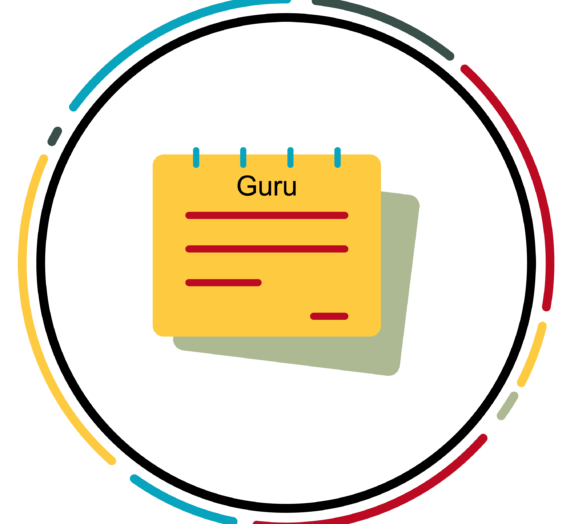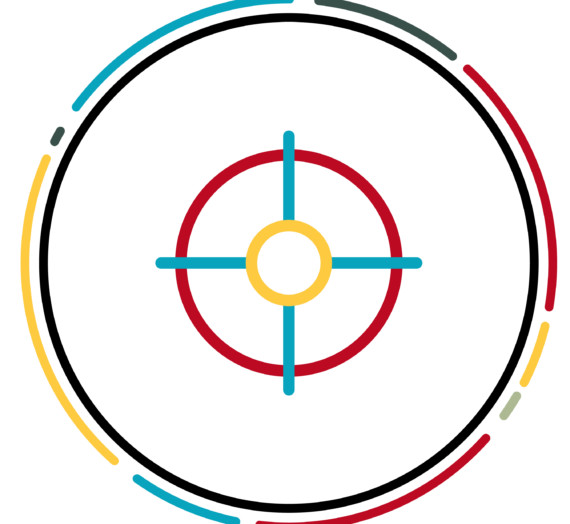The digital advertising industry is in a perpetual state of evolution, shaped by ever changing technologies and shifting consumer behaviors. It’s why so many of us get drawn to this amazing field. As we look at what lies ahead in 2025, understanding the trajectory of these changes becomes crucial for advertisers wanting to stay ahead of the curve. This post outlines the digital advertising trends in 2025 that I currently see dominating the industry.
The dig ad landscape in 2025 will include a sophisticated blend of automation, personalization, and data. Let’s explore the trends that have the potential to redefine how companies both large and small interact with their customers.
#1 Digital Advertising Trend in 2025: The Reign of AI and Automation: Efficiency and Personalization at Scale
Artificial intelligence (AI) and machine learning (ML) are no longer emerging technologies in marketing. They have become foundational, and in 2025, AI will continue to solidify its position as an indispensable tool across all facets of digital advertising. From automating routine tasks to optimizing complex campaigns, AI will empower marketers to achieve unprecedented levels of efficiency and personalization.
- AI-Powered Creative Optimization: Going beyond unsophisticated content creation, AI will allow us to tailor ad creatives to resonate with individual viewers dynamically. Advertisers can generate almost limitless ad variations to personalize content based on the browsing history of a particular user. Imagine a car advertisement that adjusts its tone to match the programming the viewer is currently watching. Or a headline created based on a user’s past search history. This level of dynamic content creation, powered by generative AI, will enable hyper-personalization without manually creating countless ad variations.
- Enhanced Audience Targeting: AI algorithms will continue to refine audience segmentation and targeting. We are moving beyond basic demographics and using AI to understand nuanced customer behaviors and preferences. This targeting will allow for more precise ad delivery allowing marketing messages reach the right audience at the right time, maximizing campaign ROI.
- AI Agents and Virtual Assistants: The rise of AI agents will further transform customer interactions. AI powered chatbots, phone operators and virtual assistants will become even more sophisticated. As the models evolve, they will become more nuanced and seamless. We will see many new vendors with products that provide human-like interactions to handle customer inquiries, set appointments, and guide users through their purchase journey.
- Balancing AI with Authenticity: While AI offers immense power, we marketers must carefully maintain a human touch. Consumers are increasingly valuing authenticity and genuine connections with brands. All of us see AI everywhere and are quick to judge when it is used improperly or when it feels artificial. The challenge today will be to leverage AI’s amazing capabilities without sacrificing the human element that builds trust and loyalty. Brands and companies will need to find a balance by allowing AI to enhance rather than replace genuine human interaction. This balance is key to successful marketing in the modern digital age.
#2 Digital Advertising Trend in 2025: Data Consolidation and Curation: Moving Towards Unified and Transparent Data Strategies
The digital advertising ecosystem has long been plagued by fragmented data, opaque and frankly questionable practices. This year we will witness a significant push towards data consolidation and curation, driven by the need for efficiency, transparency, and enhanced performance in our privacy-conscious world.
- CDP Adoption: Customer Data Platforms (CDPs) are able to pull 1st party data from disparate systems that can’t natively talk to each other. Combining data from Customer’s CRM, marketing, inbound phone call and 3rd party lead generators. CDPs aggregate this data from these systems, clean the data to combine multiple incomplete records into a single complete customer record. This data can then be leveraged to target digital advertising and create targeted email campaigns. These platforms allow businesses to activate their first party data based on where customers are in their buying lifecycle.
- Unified Data Platforms: Customer Data Platforms (CDPs), enrichment tools, clean rooms, and identity resolution solutions, once distinct technologies, converge into unified platforms. This consolidation will help marketers move beyond messy an incomplete data living in siloed systems unable to communicate with each other. These systems can address persistent challenges in measurement and attribution by linking ad exposure to tangible business metrics like point-of-sale data. Multiple industry specific platforms are on the rise, allowing this functionality to be brought to smaller companies in niche verticals.
- The Rise of Curation in Programmatic Advertising: Skepticism towards open programmatic exchanges is growing. In 2025, we will see the widespread adoption of sell-side curation and audience activations through private marketplaces (PMPs) buys. Sell side curation occurs when data and digital ad inventory are bundled into buys for advertisers. This curation offers a win-win scenario: buyers gain direct access to quality targeting data and addressable audiences at scale. Publishers increase revenue through direct sales and improved control over their first-party data. This PMP strategy evolution will provide a level of transparency that advertisers have been craving for years.
- First-Party Data Imperative: Data privacy laws and privacy first initiatives continue to drive the inevitable sunset of third-party cookies. Robust first-party data strategies will become one of the cornerstones of effective advertising. Advertisers must focus on collecting and organizing first-party data in a clean and accurate manner. This data will be crucial for building and enhancing digital advertising targeting, personalizing customer experiences, and building robust sales funnels.
- Enrichment Data: Third-party data will find a new purpose as “enrichment data,” by appending valuable characteristics to first party audiences. Utilized for augmentation, traditional third-party data can shed the negative connotations and add new value to your campaigns.
#3 Digital Advertising Trend in 2025: Evolving Advertising Channels: Beyond Traditional Platforms
The modern digital advertising landscape is expanding beyond traditional search engine and social media platforms. Marketers need to diversify their advertising mix to capture their audience’s attention across a wider range of touchpoints.
- Programmatic Video Advertising Surge: Programmatic video ad spending is projected to increase significantly this year. AI driven tools coupled with advancements in dynamic content creation and contextual targeting are fueling this growth. These new tools make video an increasingly powerful and increasingly personalized advertising medium.
- Social Search Takes Center Stage: Social search is rapidly gaining traction, especially among Gen Z and millennial audiences. Younger demographics are increasingly turning to platforms like Instagram, TikTok, and YouTube to discover products, services, and brands. In many cases, these users jump to social media rather than rely on traditional search engines. Marketers must optimize their presence and content on these social platforms to capitalize on this evolving search behavior.
- Chat GPT and AI as Search Engines: In addition to social media platforms, many users are jumping to Chat GPT and other Large Language Model (LLM) chat tools as their primary method of searching for help. Look to these models to explore advertising opportunities in the future.
- Voice Search and Voice Commerce Expansion: Voice search continues its upward trajectory. This is largely driven by the proliferation of smart speakers & smart phone voice assistants in our everyday lives. Consumers are becoming increasingly comfortable making support requests and purchases through voice commands. Brands must adapt their SEO and content strategies to accommodate conversational voice queries, focusing on long-tail keywords and human like natural language optimization.
- Generative Engine Optimization (GEO): As AI-powered chatbots and virtual assistants become more mainstream, a new form of optimization is emerging: Generative Engine Optimization (GEO). This is a trend that focuses on optimizing content for AI-powered search and conversational interfaces. Ensuring brands are discoverable and effectively communicated within these new search paradigms.
- Premium and Controlled Environments: Advertisers are increasingly leveraging controlled / premium environments for their programmatic buys. Private marketplaces (PMPs) and programmatic guaranteed (PG) deals are gaining favor over open exchanges, reflecting a focus on inventory quality over cheap impressions. These deals offer greater transparency, access to premium placements, and the ability to leverage publisher’s proprietary data for more precise targeting in a privacy-conscious era. Most importantly these deals can drive cost down and cut out many opportunities for ad fraud.
#4 Digital Advertising Trend in 2025: The Enduring Power of the Human Element: Authenticity and Connection
In an increasingly digital and automated world, the human element in marketing cannot be lost and is becoming more critical than ever. Consumers crave genuine connections and authentic brand experiences. 2025 will see a resurgence of marketing strategies that prioritize human interaction and feel personal instead of salesy.
- Brand Collaborations and Unexpected Partnerships: On a national level, unexpected and creative brand collaborations are proving to be highly effective in capturing consumer attention and generating buzz. These collaborations allow brands to tap into new customer bases and leverage the trust and engagement of partner brands’ audiences. In 2025, we can expect to see more innovative and surprising brand partnerships that move beyond traditional industry boundaries.
- Authenticity as a Core Value: Consumers are increasingly discerning and value authenticity above all else. Brands that prioritize genuine communication will resonate most strongly with their target audiences. Marketing efforts must focus on building trust and demonstrating genuine brand values and why buys, moving beyond superficial marketing tactics.
- Employee-Generated Content (EGC): Employee-generated content is gaining importance as a source of authentic and relatable brand storytelling. EGC humanizes brands, providing a behind-the-scenes look and showcasing the people behind the products and services. Encouraging and leveraging employee content can build trust and enhance brand authenticity.
- The Growing Value of Soft Skills for Marketers: In a tech driven landscape, soft skills are becoming increasingly essential for marketers. Alongside AI and data analysis skills marketers will need to prioritiz areas like communication, creativity, empathy, and emotional intelligence. These human skills are crucial for building relationships, understanding customer needs, and crafting authentic and impactful marketing campaigns.
#5 Digital Advertising Trend in 2025: Navigating the Privacy-First Future and the Cookieless World
Privacy concerns are reshaping the digital advertising landscape. 2025 will be a pivotal year for navigating the cookieless future and building privacy-centric advertising strategies.
- Adapting to Signal Loss: The deprecation of third-party cookies coupled with ever increasing privacy regulations are creating signal loss challenges for advertisers. Marketers must adapt to a world with less granular tracking data and focus on privacy preserving targeting and measurement methods.
- Contextual Targeting Renaissance: Contextual targeting is experiencing a resurgence. Driven by advancements the need for privacy-compliant advertising solutions, contextual advertising in display and video campaigns can be a lifesaver. AI-powered contextual targeting utilizing Large Language Models (LLMs) enables advertisers to parse vast amounts of data. With this data, they can place ads with greater precision based on content relevance, without relying on personal data.
- New Mixes of Existing Targeting Strategy: Utilizing 3rd party tools to understand audience content consumption patterns instead of standalone targeting. Other potential key options include leveraging first-party data to enhance contextual targeting. This layered approach adds additional signals to your contextually targeted campaigns.
#6 Digital Advertising Trend in 2025: Immersive Technologies: AR and VR Transforming Customer Experiences
Augmented Reality (AR) and Virtual Reality (VR) are looking to move beyond niche applications and entering the mainstream marketing toolkit. In 2025, these immersive technologies will start to become reality and transform customer experiences, particularly in sectors like retail.
- AR and VR in Retail and Beyond: Brands are increasingly starting to leverage AR and VR creating immersive shopping experiences. Virtual try-on applications in fashion & beauty, and virtual property tours in real estate are becoming more common. These technologies enhance customer engagement, provide unique brand interactions, and differentiate brands in competitive verticals.
- Investing in Immersive Platforms: Brands looking to embrace AR and VR should consider investing in AR experience platforms tailored to their industry. Early adoption of these technologies can create a competitive advantage by offering customers innovative and engaging brand experiences.
Digital Advertising Trends in 2025:
Conclusion: Embracing Change and Building Meaningful Connections
Digital advertising in 2025 will be defined by a fascinating interplay of advanced technologies and a renewed emphasis on human connection. AI and automation will drive efficiency and personalization at scale, while data consolidation and new strategies will pave the way for more transparent and effective data strategies. The advertising landscape will expand across diverse channels to meet modern content consumption. Authenticity and genuine interaction will emerge as core values guiding brands to build meaningful relationships with their audiences in an increasingly fragmented digital world.
For marketers, the key to success in 2025 lies in embracing these trends proactively. This means:
- Investing in AI and automation tools to enhance efficiency and personalization.
- Developing robust first-party data strategies and exploring multiple data and targeting solutions.
- Diversifying channel strategies to capture audience attention across evolving platforms.
- Prioritizing authenticity and human connection in all marketing efforts.
- Exploring immersive technologies to create engaging customer experiences.
- Upskilling marketing teams to navigate the complexities of AI, data, and evolving consumer behaviors.
By understanding and adapting to these key trends, marketers can navigate the digital frontier in 2025 and beyond, building impactful campaigns that resonate with audiences and drive sustainable growth.


